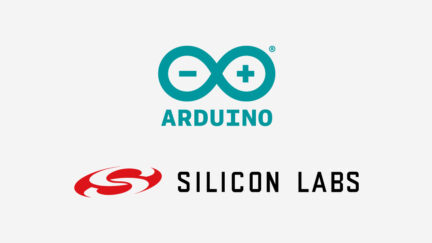Blog
Categories

Vivid Unit – An RK3399-Based SBC with a Built-In Touchscreen Display
The Vivid Unit is an RK3399-based Single Board Computer (SBC) featuring a 5.5-inch touchscreen display, 4GB LPDDR4 RAM, and 32GB...
The Vivid Unit is an RK3399-based Single Board Computer (SBC) featuring a 5.5-inch touchscreen display, 4GB LPDDR4 RAM, and 32GB eMMC storage along with Ethernet, Wi-Fi (802.11b/g/n), and Bluetooth 4.1, USB 3.1 Gen1, HDMI, and a 40-pin GPIO harder. They were designed for smart home automation, robotics, and industrial control systems applications. Inside the Vivid […]

LILYGO’s T-FPGA – An M.2-Formated Dev Board with ESP32-S3 and Gowin GW1NSR FPGA
The LILYGO T-FPGA development kit consists of two components: an M.2 module and a carrier board. The M.2 module features an...
The LILYGO T-FPGA development kit consists of two components: an M.2 module and a carrier board. The M.2 module features an ESP32-S3 SoC and Gowin GW1NSR-4C FPGA with 4,608 LUTs along with USB-C OTG for ESP32-S3, a USB-C port for FPGA, four Pmod interfaces, a STEMMA Qt/Qwiic connector, pins for 3.3V and GND, and a […]

52Pi NVMe HATs for Pi 5 will Support 2230, 2242, 2260, and 2280 Sizes SSDs
52Pi recently launched two NVMe M.2 SSD HATs for the Raspberry Pi 5, called N04 and N05. It supports a range of NVMe SSDs like...
52Pi recently launched two NVMe M.2 SSD HATs for the Raspberry Pi 5, called N04 and N05. It supports a range of NVMe SSDs like 2230, 2242, 2260, and 2280, with Gen 3 speeds. Additional features include cooling vents, slots for display/camera cables, and a gold-plated PCB for better performance. Previously, we have seen many […]

Raspberry Pi 5 Now Supports Two SSDs with Geekworm X1004 HAT+
The Geekworm X1004 HAT+ for the Raspberry Pi 5 supports two SSDs, allowing for a total storage capacity of up to 8TB. It enables...
The Geekworm X1004 HAT+ for the Raspberry Pi 5 supports two SSDs, allowing for a total storage capacity of up to 8TB. It enables quick data transfer speeds—up to 5 Gbps using PCIe 2.0 and up to 8 Gbps with PCIe 3.0. Previously, we have seen many companies build NVMe HATs for the Pi5 like […]

Mcuzone MPW7 Wi-Fi 7 HAT for Raspberry Pi 5 Supports Google TPU
The Mcuzone MPW7 is a HAT for the Raspberry Pi 5 that adds Wi-Fi 7 capabilities to the Pi5. It works with specific Wi-Fi modules...
The Mcuzone MPW7 is a HAT for the Raspberry Pi 5 that adds Wi-Fi 7 capabilities to the Pi5. It works with specific Wi-Fi modules like the Intel BE200, AX210, and AX200. On top of that, the company said the module will also have support for Google TPU, Wi-Fi 6/6E, and Bluetooth onboard. Previously, we […]

Microchip’s LAN969x Series Ethernet Switches Features TSN, HSR/PRP Redundancy, and Scalable Bandwidth from 46 Gbps to 102 Gbps
In a recent press release, Microchip Technology announced their new LAN969x series of chips powered by a powerful 1 GHz...
In a recent press release, Microchip Technology announced their new LAN969x series of chips powered by a powerful 1 GHz single-core Arm® Cortex®-A53 CPU. This new Ethernet switch offers scalable bandwidths, time-sensitive networking (TSN), and two redundancy protocols for increased reliability. To be specific, the LAN969x series is made of three new chips: LAN9694 (46 […]

Libre Computer’s Solitude AML-S905D3-CC is A $45 SBC Optimized for AI Tasks
Libre Computer just announced their latest and greatest product the Solitude AML-S905D3-CC. It’s a $45 SBC powered by the...
Libre Computer just announced their latest and greatest product the Solitude AML-S905D3-CC. It’s a $45 SBC powered by the Amlogic S905D3 processor and has support for UEFI Bios and standard Linux distributions. The AML-S905D3-CC uses the Amlogic S905D3, it is a CPU based on the ARM Cortex-A55 architecture and features 4 efficient cores for computing […]

Arduino and Silicon Labs Collaborate to Embed Matter Protocol into Arduino IDE
Arduino and Silicon Labs are teaming up to make it easier to use the Matter protocol for IoT devices. This project will happen in...
Arduino and Silicon Labs are teaming up to make it easier to use the Matter protocol for IoT devices. This project will happen in two phases. The first phase, which took place at CES 2024, involved the release of a user-friendly Arduino library for the Matter protocol, along with a new core for SiLabs microcontrollers. […]